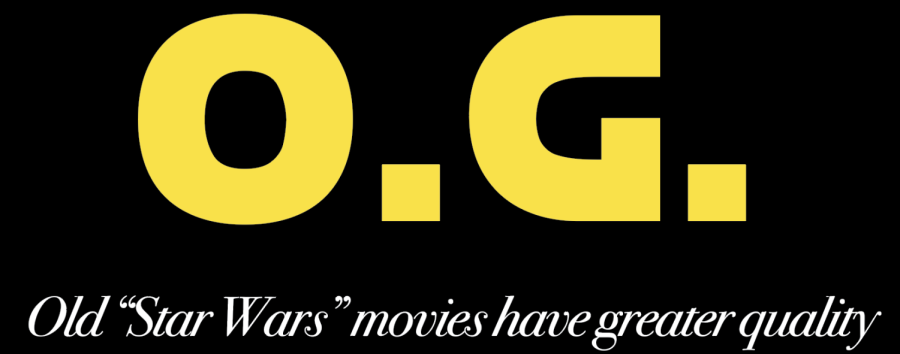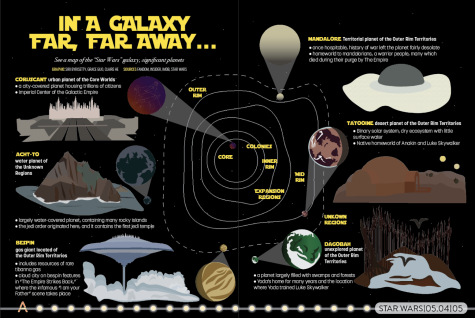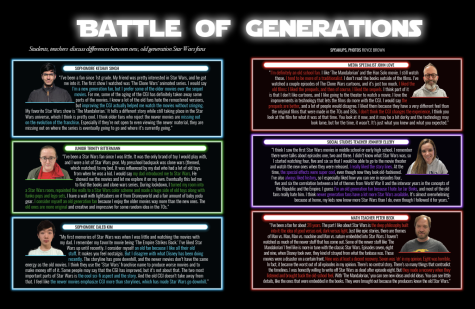Old “Star Wars” movies have greater quality
As someone who was not influenced by the nostalgia of “Star Wars” while growing up, and who had only recently delved into the world of “Star Wars” through watching the dozen major films in the same time frame, it is evident that the older films are superior in many ways.
The most obvious aspects in which the original trilogy of films are of greater quality than, for example, the most recent trilogy, are in the story and the characters. The “Sequel Trilogy,” referring to the three films “The Force Awakens,” “The Last Jedi” and “The Rise of Skywalker,” have an obvious lack of cohesion and development, both in the plot and the newly-introduced characters. The differences in direction between each of the films is shown as previous films disregard built-up storylines in favor of establishing new ones, as shown in Rey’s heritage, the lack of explanation for Palpatine’s return at the end of the last movie and the near-discarding of the character arcs of those like Finn. In contrast, the “Original Trilogy” has far more developed elements of cohesion; while there are certainly facets in which the story arcs were not entirely planned out, such as in the case of Luke and Leia being twins, there is still consistency in characterization and every major protagonist gets to shine in the story. Luke undergoes his journey to develop from a farm boy to a Jedi as he grapples with the revelation of his father’s identity; Leia develops from a princess to a key part of the Rebellion; Han gradually becomes less selfish to the point of caring for the aforementioned two characters. These characters and their relationships to each other are complex and multifaceted, while often in the sequel trilogy, characters like Finn and Poe do not stand on their own, and are mere shadows to Rey.

Additionally, the sequel trilogy’s protagonists themselves are less rounded and dynamic; Rey, while still undergoing growth throughout the three movies and containing multitudes of strengths and weaknesses, achieves many of those strengths in a relatively unrealistic time frame within the story, and thus her growth does not feel natural. While the sequel trilogy’s cinematography, CGI and other technical effects are undoubtedly superior to the older films’ due to increased funding and technological improvement over the course of more than thirty years, the flashiness and aesthetics do not outweigh the critical flaws in the fundamentals of what makes a movie good.
The antagonists, as well, are less well-executed in the later films compared to the originals. The original trilogy is the birthplace of many of the most iconic cinematic villains: the distinctive suited Darth Vader, the manipulative and powerful Emperor Palpatine, the despicable Jabba the Hutt, and the bounty hunter Boba Fett. The only truly developed antagonist in the sequel trilogy is Kylo Ren, because Snoke is revealed to be only a puppet and Palpatine’s return creates a rather one-dimensional perception of the character.
Another aspect in which the sequel trilogy falls short in comparison to the original trilogy is in the plot and originality. The plot twists have significantly less weight in the former, because many of them have already been done. For example, the reveal of Rey being related to Palpatine has little shock value because the twist of the protagonist being related to the villain has already been executed first with Luke and Darth Vader. Starkiller Base, although its magnitude is far greater than that of the original Death Star, does not convey the same sense of horror because the idea of that destruction of planets has already been done and so the effect wears off when repeated.
In the most important parts of storytelling—characters and plot—the newer movies fall short in comparison to the older movies, therefore making the older movies superior as a whole.







